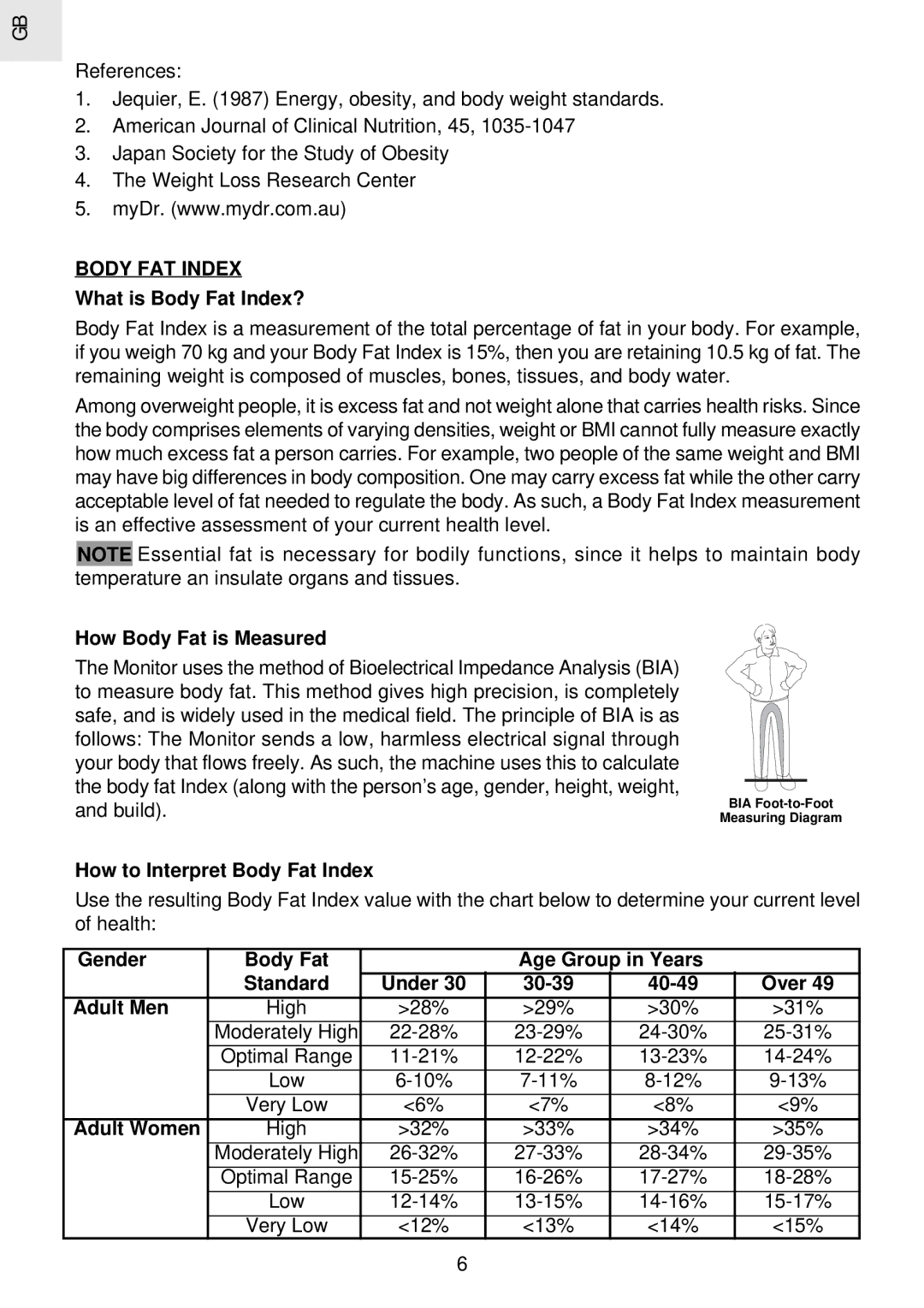
GB
References:
1.Jequier, E. (1987) Energy, obesity, and body weight standards.
2.American Journal of Clinical Nutrition, 45,
3.Japan Society for the Study of Obesity
4.The Weight Loss Research Center
5.myDr. (www.mydr.com.au)
BODY FAT INDEX
What is Body Fat Index?
Body Fat Index is a measurement of the total percentage of fat in your body. For example, if you weigh 70 kg and your Body Fat Index is 15%, then you are retaining 10.5 kg of fat. The remaining weight is composed of muscles, bones, tissues, and body water.
Among overweight people, it is excess fat and not weight alone that carries health risks. Since the body comprises elements of varying densities, weight or BMI cannot fully measure exactly how much excess fat a person carries. For example, two people of the same weight and BMI may have big differences in body composition. One may carry excess fat while the other carry acceptable level of fat needed to regulate the body. As such, a Body Fat Index measurement is an effective assessment of your current health level.
NOTE Essential fat is necessary for bodily functions, since it helps to maintain body temperature an insulate organs and tissues.
How Body Fat is Measured
The Monitor uses the method of Bioelectrical Impedance Analysis (BIA) to measure body fat. This method gives high precision, is completely safe, and is widely used in the medical field. The principle of BIA is as follows: The Monitor sends a low, harmless electrical signal through your body that flows freely. As such, the machine uses this to calculate the body fat Index (along with the person’s age, gender, height, weight, and build).
How to Interpret Body Fat Index
BIA
Measuring Diagram
Use the resulting Body Fat Index value with the chart below to determine your current level of health:
Gender | Body Fat |
| Age Group in Years |
| |
| Standard | Under 30 | Over 49 | ||
Adult Men | High | >28% | >29% | >30% | >31% |
| Moderately High | ||||
| Optimal Range | ||||
| Low | ||||
| Very Low | <6% | <7% | <8% | <9% |
Adult Women | High | >32% | >33% | >34% | >35% |
| Moderately High | ||||
| Optimal Range | ||||
| Low | ||||
| Very Low | <12% | <13% | <14% | <15% |
6
